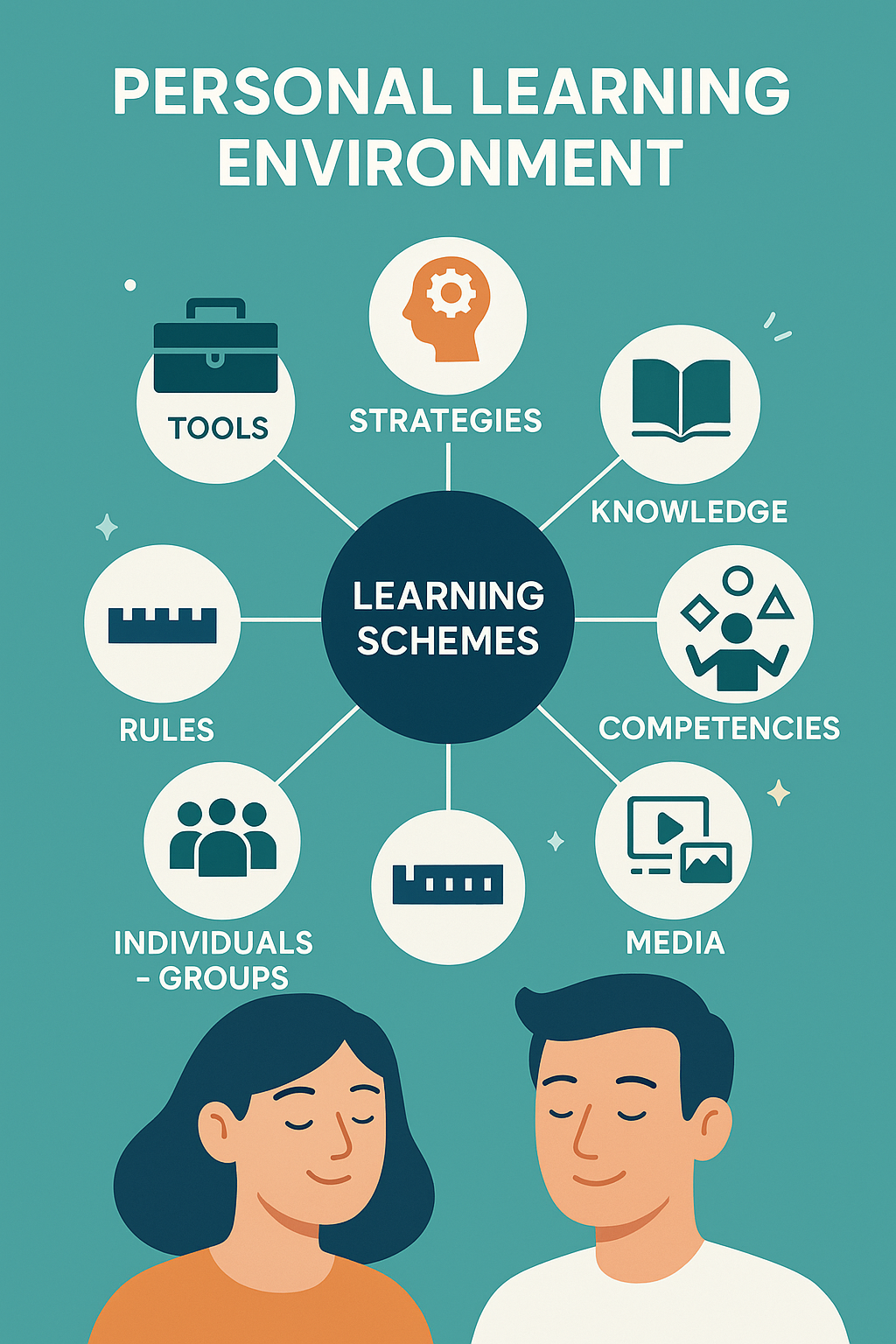Overview
This paper introduces MEPA, an original method for analyzing and modeling Personal Learning Environments (PLEs). Conceived for researchers and educational engineers, MEPA provides conceptual, methodological, and visual tools to make learners’ invisible learning ecosystems visible and usable.
Key Contributions
- Generic Model & Modeling Language
MEPA is built on a generic model of PLEs, combined with a specialized visual language to represent the learner’s tools, strategies, knowledge goals, and social context. It distinguishes between four types of learning artifacts: technical, pedagogical, didactic, and social. - Expressivity & Interpretability
The method emphasizes clarity for both learners and researchers, aiming for highly expressive models that are simple to interpret and ontologically rich. - Validated Through Field Research
The method was validated during a longitudinal study with 15 university psychology students. Over a semester, 60 PLE instances were modeled and refined through five rounds of interviews and intersubjective validation. - Pragmatic Utility
MEPA is both a research method and a pedagogical engineering tool. It supports in-depth analysis of how students build and regulate their learning environments, highlighting patterns, gaps, and opportunities for improvement.
Illustrative Case
The paper details a case study involving one student’s learning journey, showcasing how the method dissects and visualizes cognitive strategies, tools used (e.g. Google Drive, Cornell note-taking), group collaboration dynamics, and learning goals. This multi-layered representation exposes the complexity and richness of personal learning ecosystems.
Future Directions
Felder concludes by highlighting the potential for digital tools to automate MEPA’s steps and calls for collaborative research to expand and refine the underlying models. The method opens new pathways for personalized learning support and large-scale educational research.
